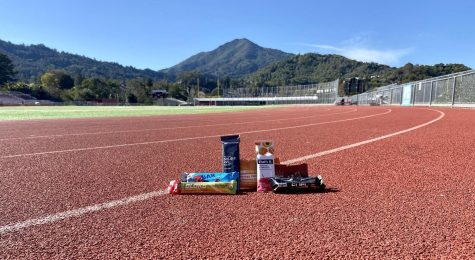Protein? Carbs? Nutritional fueling for any sport
February 9, 2023
When it comes to preparation for any sports event, second in importance to training is an athlete’s nutrition. Whether it be a strength workout, cardiovascular effort or competition, nutritional fueling before and during activity varies greatly by individual. However, there is much crossover between any sport and skill level. Therefore, after years of bike racing and thousands of hours of training, here are some of my favorite methods and products to achieve success.
Pre-Activity
To perform any physical movement, human cells need sugar to produce energy. When digested, all food breaks down into four categories: carbohydrates (sugars), proteins (amino acids), micronutrients (vitamins, minerals and electrolytes) and fats. An athlete’s nutrition begins with having the right combination of these macromolecules.

For shorter, sprint-like efforts, carbohydrate rich foods with plenty of nutrients should be consumed three to four hours in advance. Some of my favorite meals include oatmeal with berries, whole grain cereals with fruits, and toast with an egg or two.
The size of these meals depends on an individual’s caloric needs, but overeating can negatively affect digestion and performance. Thus, feeling slightly hungry after a final meal is often ideal for most athletes.
In earlier meals (including the day before activity), additional carb-heavy foods should be consumed, including vegetables and starchy foods, such as potatoes, rice, pasta and other grains.
Foods to avoid in the several meals before activity include fried or oily substances that disrupt digestion and unnecessary added sugars to maintain stable blood levels.
If an activity leans toward a prolonged endurance effort, increasing meal size and the presence of proteins, unprocessed fats and fibrous foods (fruits and vegetables) will improve stamina. However, carbs should still be prioritized since they are the body’s primary source of energy.
Regardless of the effort, an athlete should only consume what they are comfortable with; avoid all unknowns on competition days, and only experiment during training.
During Activity
In the final minutes before an activity, consuming additional sugars will help boost energy, which is especially important for intense efforts. Once in action, look to maintain a consistent intake of simple carbohydrates to provide a steady flow of energy.

While consuming copious amounts of added sugars may seem unhealthy, during exercise, the human body can’t distinguish between normally good and bad food; instead, it only cares about having the basic carbs for sufficient fueling.
My favorite products for short-term fueling include Clif Shot Bloks, Untapped Maple Syrup packets, Science-in-Sport chews and Bonk Breaker energy chews. Each offers a variety of options regarding flavors, carbs and electrolytes to choose from.
Foods with whole grains, fats, proteins or fiber offer slower-burning calories that can fuel longer endurance efforts lasting longer than one hour. Clif Zbar, Jambar, Bonk Breaker and Maurten are some of the best tasting grain, protein and sugar based bars.
Although energy chews, gels and bars offer nutrition engineered for athletes, if over-consumed, these can lead to flavor fatigue and poor digestion. That’s why whole foods, such as nuts and, my favorite, dried fruit, are helpful for endurance efforts in excess of two hours.
Whether from produce or packaged products, the calories consumed during an activity should equal approximately half the calories burned. Although, for milder training sessions of shorter duration (about one hour), there is less of a need to eat, if at all.
The external conditions surrounding an activity should also be considered. If there is excessive heat, consuming foods high in sodium and other electrolytes before and during the exercise is of special importance to replenish nutrients lost through perspiration.
With a basic understanding of sports nutrition, products and methods, the final step to optimal fueling is to find out what works for you and implement this strategy in your activities. No athlete is the same, so experimenting throughout training with different flavors, products and meals at different times and in different scenarios will give you the best understanding of your fueling needs. With this, there’s no longer a need to worry about your nutrition come that next competition.







